|
|
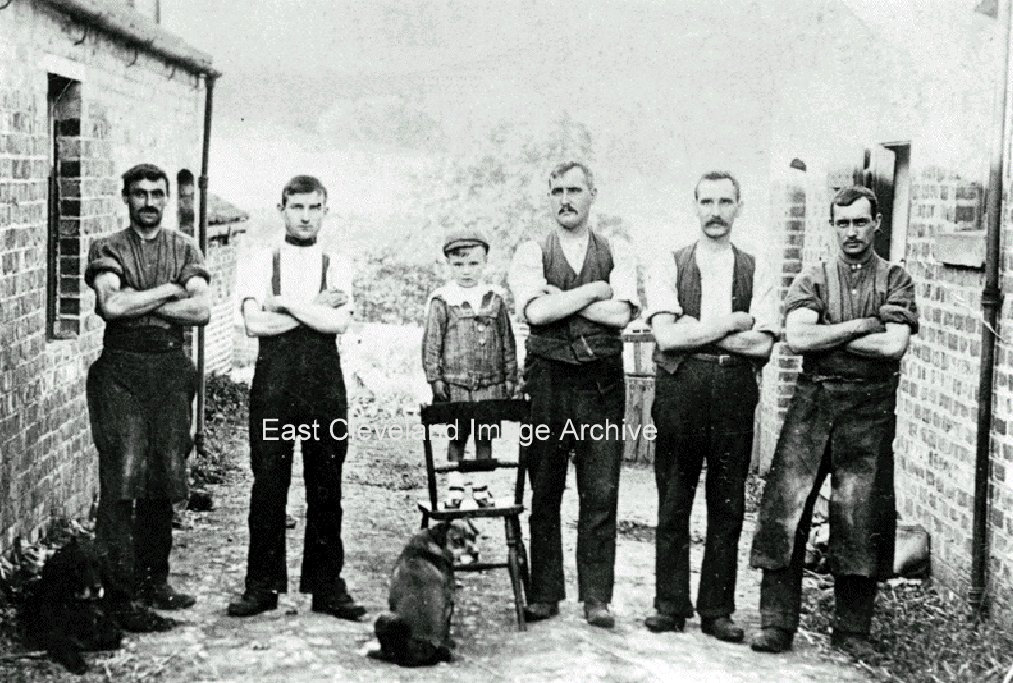
A quirky image by modern standards, but typical of the type of narrative image that occurred in early photography. Alfred Wither (left) blacksmith for Spawood and South Skelton Mines with his striker (right) and stable-hands, an indispensable part of the iron mining industry, they made and maintained just about every tool in use in the mine. Just who the well-dressed little boy is in the middle I do not know – can anyone tell me please?
Image courtesy of Cleveland Ironstone Mining Museum.
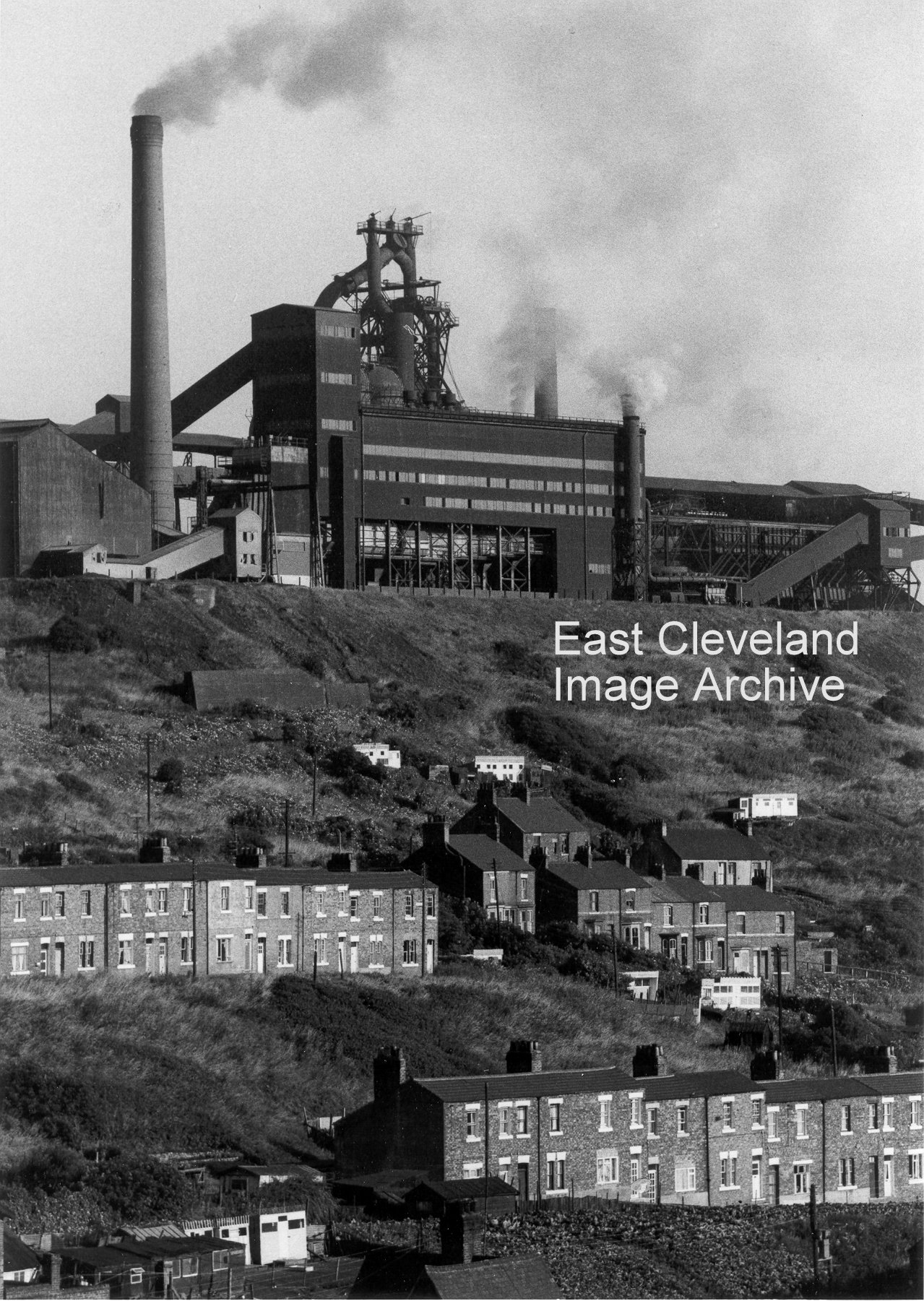
Taken in the late 1950’s this photograph shows none of that characteristic staining from the sinter dust. Commissioned in 1957, built by Head Wrightson and the Sinter Plant stood on the site of the old coke works and blast furnace range.
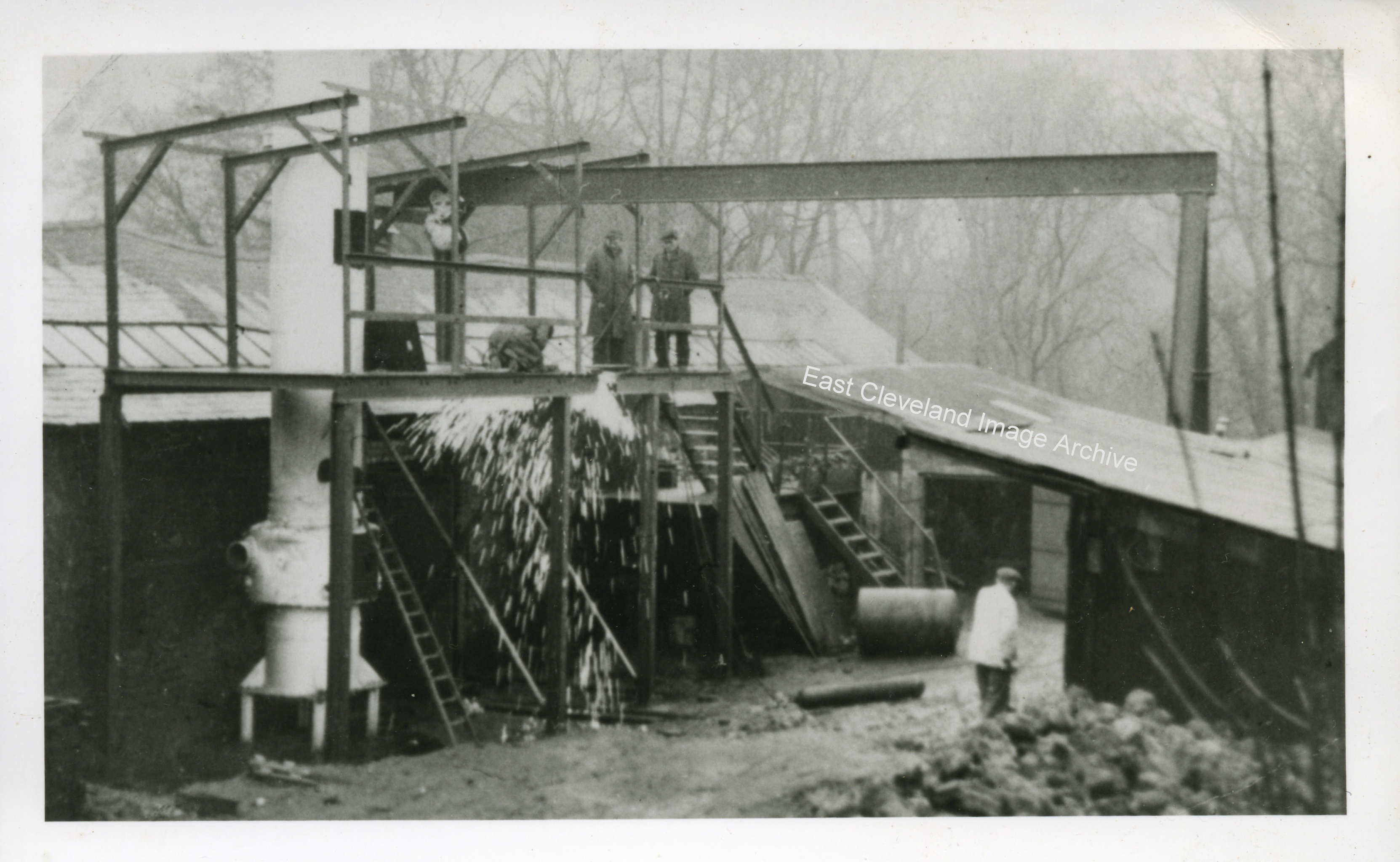
Here is another first, we had previously no other photographs of the foundry at Loftus. Do you have any to loan us please?
Eric Johnson comments: ”An interesting view of the cupola melting furnace at the foundry, apparently being demolished. Three men are on the charging platform, the charging door on the cupola is open where the charge of pig iron/coke/limestone was introduced. To the right is a hoist on a large beam (above the standing men), used to raise the charges to the platform. At the base of the cupola the air chest for the blast around the cupola can be seen, with air pipe disconnected. Standing on 4 legs, the cupola probably had a drop bottom for emptying slag etc after the days run. The foundry originally owned by Robinson Brothers who produced farm implements, ploughs, etc. They also cast drain covers and gulleys, many of which can still be seen on the streets of East Cleveland. I have seen one at Piercebridge, Co. Durham. A speciality (unique?) were the cast iron gravestones, seen in the old cemetery. Robinson Bros were regular exhibitors at the Wool Fairs in the Market Place, Loftus. Old images show many of their products and warehouse next to the present day Post Office. I believe the foundry was taken over by Tinsley & Co. and is now used by Steve Whitlock.”
Bill Tinsley tells us: ”Zetland foundry was owned by my grandfather until his death in the late 1930s. My father was a mining engineer with Richard Sutcliff in Horbury near Wakefield who sold a half-share to a manager who continued to run the foundry until around 1950. I spent a lot of time there as a child with my grandfather watching and getting in the way but even as a 7 or 8 year old I learned quite a lot about casting and machining methods There was a small machine shop at the far end of the buildings.” Bill also tells us: ”The cast iron railings round Saltburn Bandstand were made by grandfather at Zetland Foundry in the mid thirties but unfortunately removed early in Second World War and melted down for the war effort. Incidentally Thomas Tinsley was apprenticed to John Wood and Co (Steam engine and winch manufacturers in Lancashire) in July 1881.The papers which I still have includes phrases “Shall not wast the goods of his masters,Shall not frequent taverns or playhouses,or contract matrimony”.The apprentiship was for “Engine Fitting”. He later went on to be chief engineer at Nostel mine nr. Wakefield before buying Zetland Foundry. I have 3 photographs taken in 1970 when I last went there,one showing a similar view with the cupula removed, but just possible to see part of the words Zetland Foundry on the hoist beam. Another showing the brass name plate (Thos Tinsley & Son) on the old office door and the third showing his house in Saltburn.”
Photograph courtesy of Keith Bowers and thanks to Eric and Bill Tinsley for the updates.
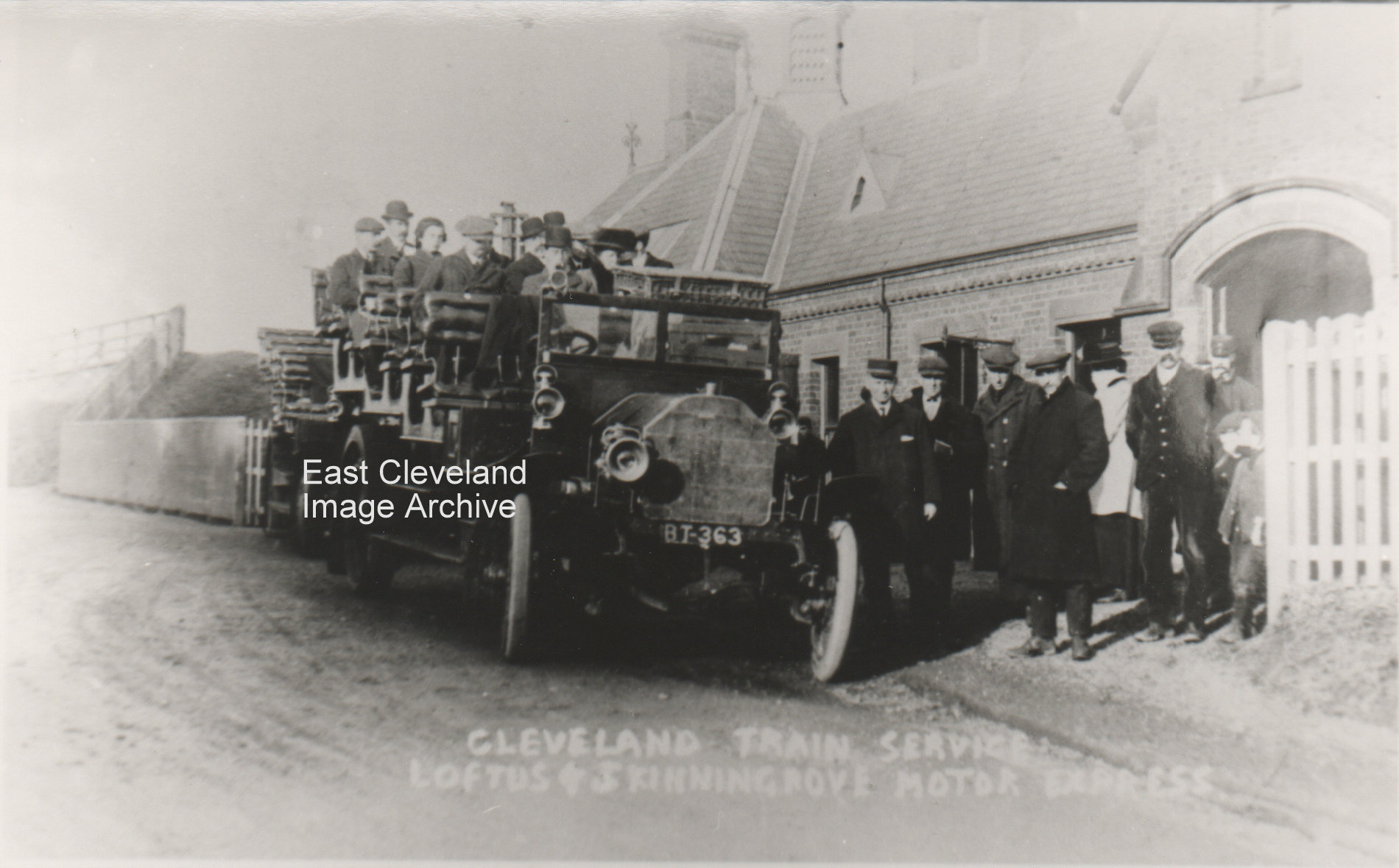
This image bears the caption: ”Cleveland Train Service, Loftus and Skinningrove Motor Express”. We believe this is an image of the bus service laid on by the North Eastern Railway when Kilton viaduct was being converted to an embankment; showing an open bus outside Loftus Station. Simon Chapman has advised us: ”It took from 1907 to 1914 to convert Kilton Viaduct to an embankment and trains continued running; but in January 1911 cracks were noticed in a pier so trains were halted for a fortnight whilst extra tipping took place to safeguard the structure. This charabanc service operated between Loftus and Skinningrove Stations for those two weeks, and trains from Liverton Mines had to get to Cargo Fleet via Whitby and Battersby.” A view of the filling in of the Kilton Viaduct can be view on the site.
Many thanks to Simon Chapman for the information.
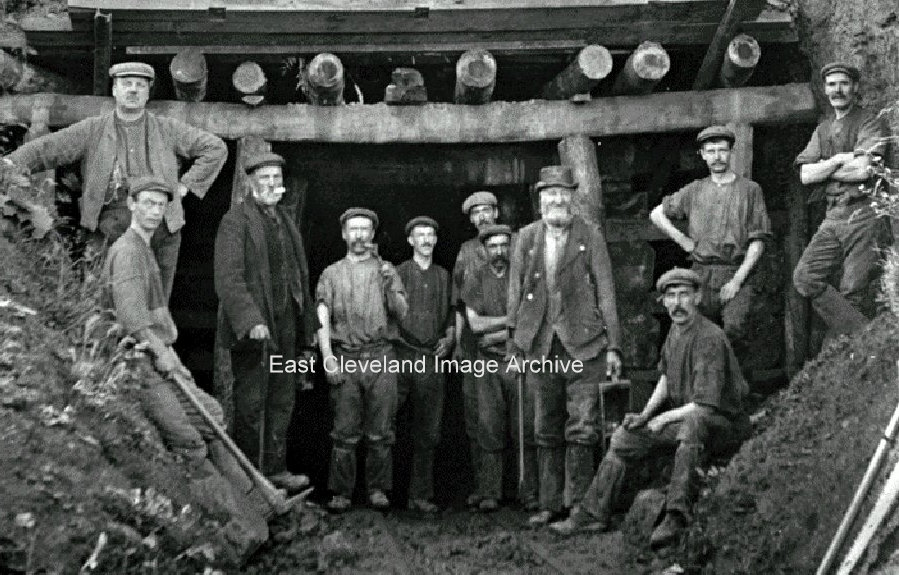
A group of Ironstone Miners and their Marra’s pose at the entrance of the drift, we can see a midge, a pick or two and a pry bar, but no shot canisters – could this be a work party rather than a group of miners? We now know who; from top left: Isaac Collins, Jack Norman (with pick), Jack Leng(?), Bill Pinchin, Charlie Hitchcock, ??, ??, Mr. Swan (Backbye Deputy), Guy Herbert, ??, Ben Hamer.
Original information researched by the late John Owen and provided by Chris Twigg of Hidden-Teesside
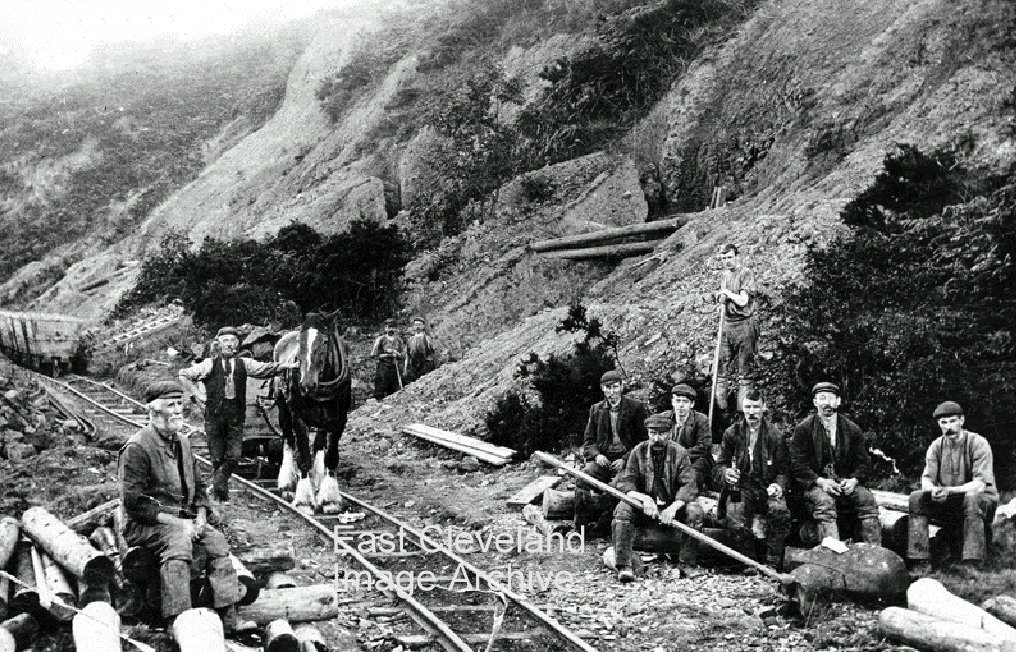
The heading tells us where it is and have the men stopped for a break or just to pose for the photograph? This image is from the tramway that went in the direction of Saltburn at the Upleatham Mine workings and dates from 1910
Image courtesy of Cleveland Ironstone Mining Museum and thanks to David and Mike for the information and updates.
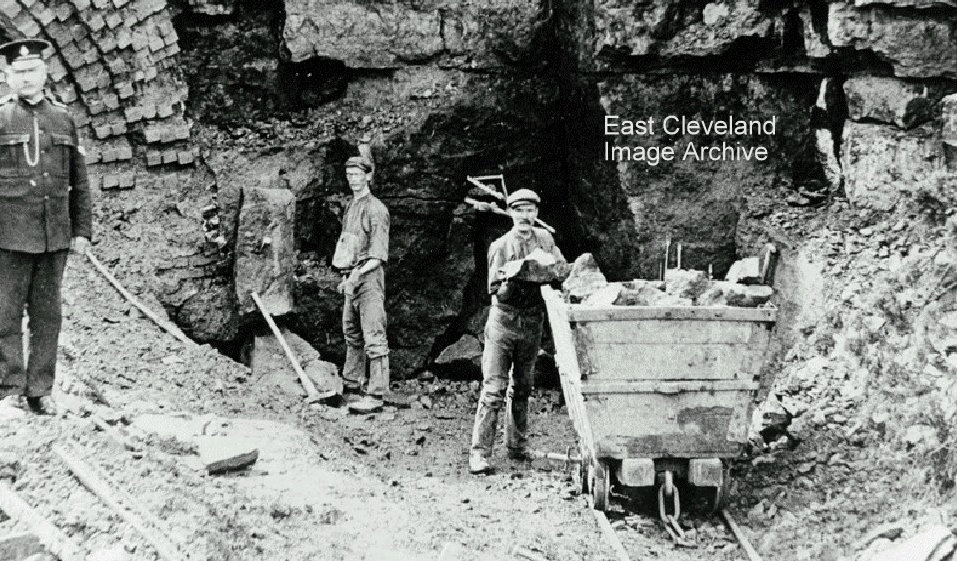
We wondered as to why the constable was present? Mike Holliday tells us: ”This photograph shows miners at work at the recently filled in East Winning digging out Lost Pillars c. 1890. The men in the picture are from left to right:
PC Welburn, Jack Norman, Ben Hamer. PC Welburn as well as being the village policeman was also responsible for collecting due rents from the inhabitants of the house’s as owned by Pease & Partners. With the mine owners being a strict Quaker family – there was a ZERO tolerance on alcohol and gambling – ‘many a village’s “still” was raided and the tenants evicted in the name of Pease & Partners. PC Welburn died in 1910 due to pneumonia at the age of 52.”
Image courtesy of Cleveland Ironstone Mining Museum and thanks to Mike Holliday for that update.
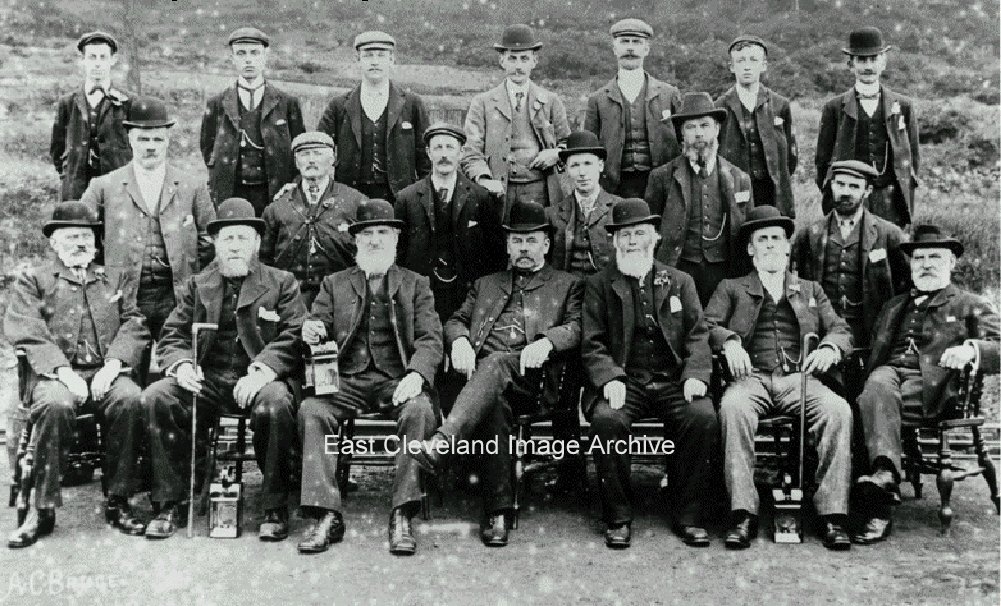
This image of the Upleatham Mine Management dating from 1904 was supplied by the great grand-daughter of William Hall, mining engineer; 1852 – 1942, at New Marske, from the original photograph with all named in William Hall’s handwriting. Looking at the midges on display this group also includes the working management of the mine, not just the topside management.
Back row (left to right): B. Robinson, J. ’Darkie’ Reed, Ralph Clark, Dan Bailey, Harry Bowes, Wilf Hardy, Henry Goldfinch.
Middle row: Pev Thompson, William Douthwaite, Walter Durance, J. Hood, William ‘Wood’ Sigsworth, ’Tiny’ Thirkettle.
Front row: William Hall, Joe Beaumont, William Howes, Christopher ‘Kit’ Heslop, William Durance, William Jones, John Bevan.
M. Foster tells us: “That’s my great great great granddad, William Howe I believe. He was born about 1828. Thanks for putting this photo on, giving me that chance to see him.”
Image courtesy of Cleveland Mining Museum and thanks to Mike Holliday and M. Foster for information and updates.
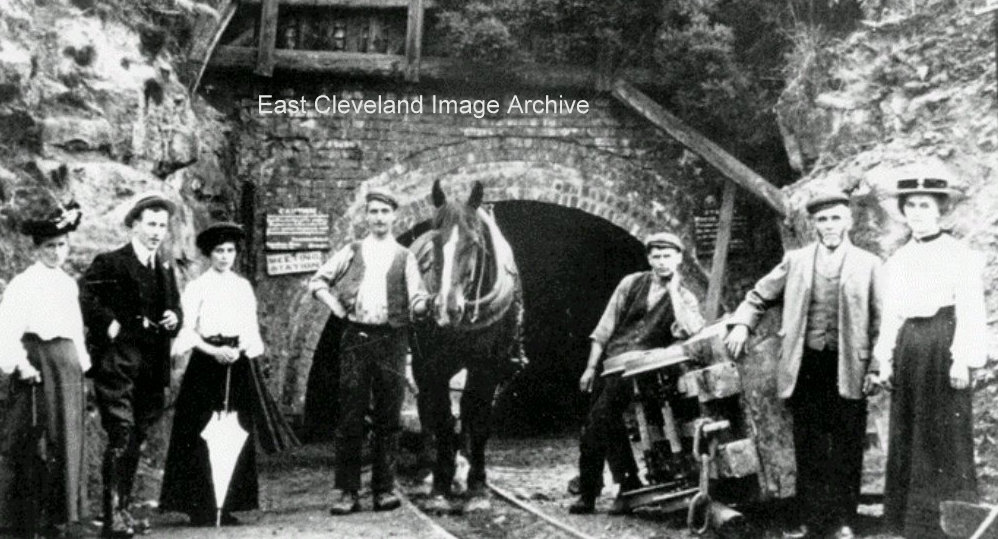
This has to be either bizarre or this group were the owners and their families! Who would visit an iron ore mine in walking out clothes! All the same a very good image of the travelling drift at Upleatham, we are unsure as to why the tub would be on its side though! Paul Anderson tells us: ”The people to the far right are my great, great, great grand parents John (Jack) and Jane Pinchin of 86 Dale Street, New Marske. The photograph is circa 1915-1920. They came up from Manningford, Wiltshire in 1881 looking for work and had 12 children. There are still members of the Pinchin family in New Marske today. ”
Image courtesy of Cleveland Ironstone Mining Museum and thanks to Paul Anderson for that update.
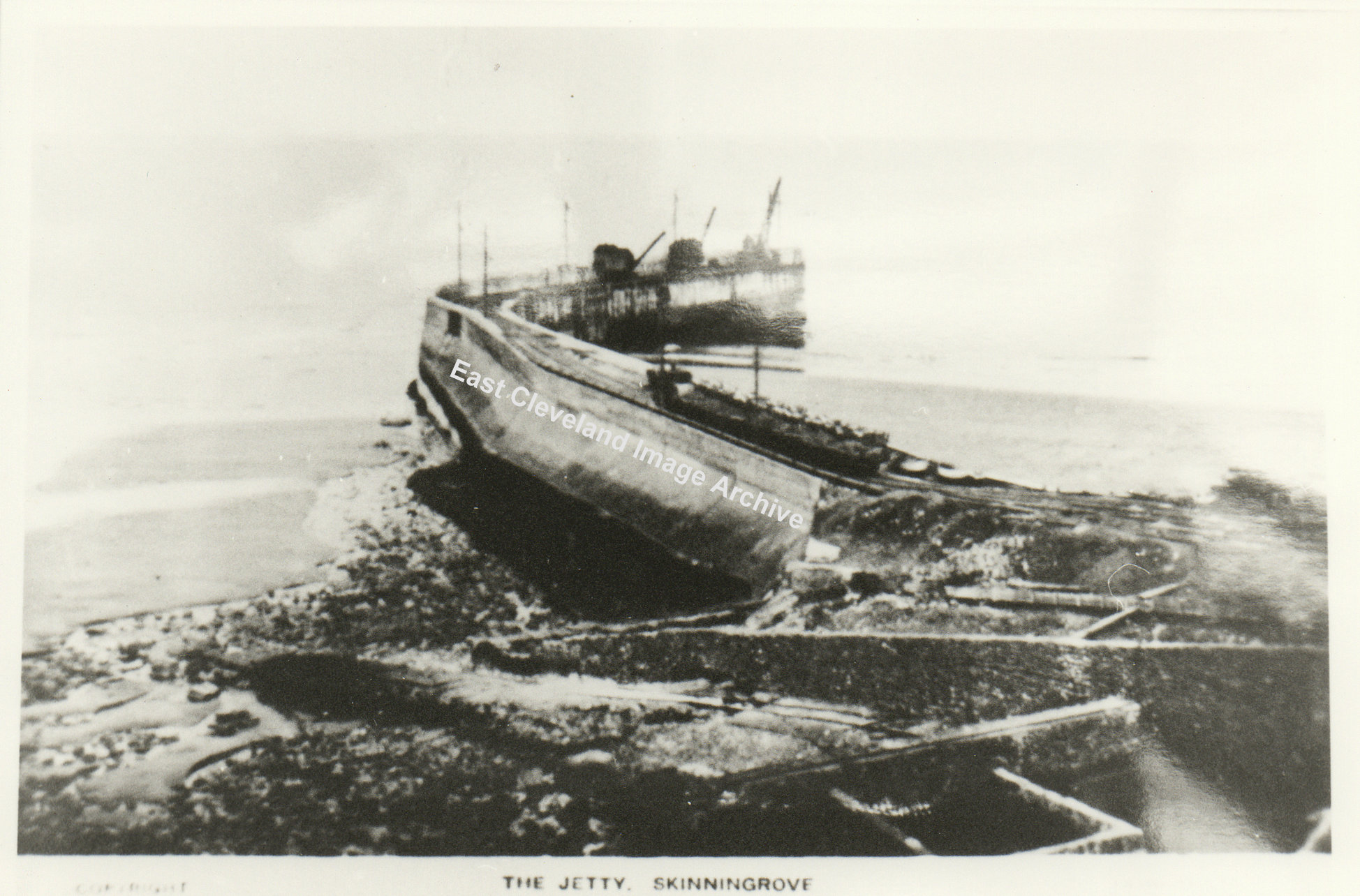
A picture of Skinningrove Jetty at low tide, showing the vertical-boiler steam locomotive and a rake of pig-iron trucks, the two steam cranes and the fixed derrick crane on the end.
|
|










Recent Comments